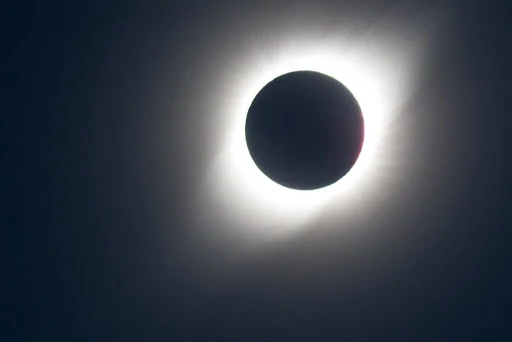The April 8th total solar eclipse promises a mesmerizing celestial event for those lucky enough to be within its path. But what exactly will you see if you're in the zone of totality? Here's a glimpse:
- Dramatic Darkness: As the moon completely covers the sun, daytime will transition to an eerie twilight. This sudden darkness is a hallmark of totality, and it can be quite disorienting.
- Celestial Revelations: With the sun blocked, the surrounding sky will become a canvas for celestial wonders. Look out for bright stars, including Venus, which will be the most prominent. Planets like Jupiter, Saturn, and even Mars might be visible.
- Corona's Crown: The sun's normally hidden corona, its wispy outer atmosphere, will become a breathtaking sight during totality. This faint layer is only visible when the sun's bright face is obscured.
- 360° Sunset: Look around the horizon, and you might witness a stunning phenomenon – a complete sunset all around you. This is caused by the sudden drop in sunlight reaching the Earth's atmosphere.
- Nature's Bewilderment: Animals might be fooled by the sudden darkness, exhibiting nighttime behaviors like chirping crickets or confused birds.
- Color Shift: The world will take on a surreal hue. Colors like greens and blues will appear more vibrant, while reds will seem dimmer.
- Safety First: Remember, looking directly at the sun, even during a partial eclipse, is extremely dangerous. Only during totality, with the sun completely blocked, is it safe to remove your specially certified solar eclipse glasses to witness the spectacle.
Interesting. All 7 planets will be in the sky at the moment of the April 8th eclipse.
Show draftWhile the April 8th eclipse will be a spectacular event for skywatchers, seeing all 8 planets (including Pluto) at the same time is very uncommon.
Here's what you can expect during the eclipse:
- Venus and Jupiter will likely be the stars of the show. Venus, the brightest planet, will be west of the eclipsed sun, and Jupiter, the second-brightest, will be to the east.
- Seeing Mars, Saturn, and Mercury is a possibility. These planets will be fainter and harder to spot compared to Venus and Jupiter. Mercury will be very close to the sun and might not be visible at all.


Interesting so I must join in time .
ReplyDelete